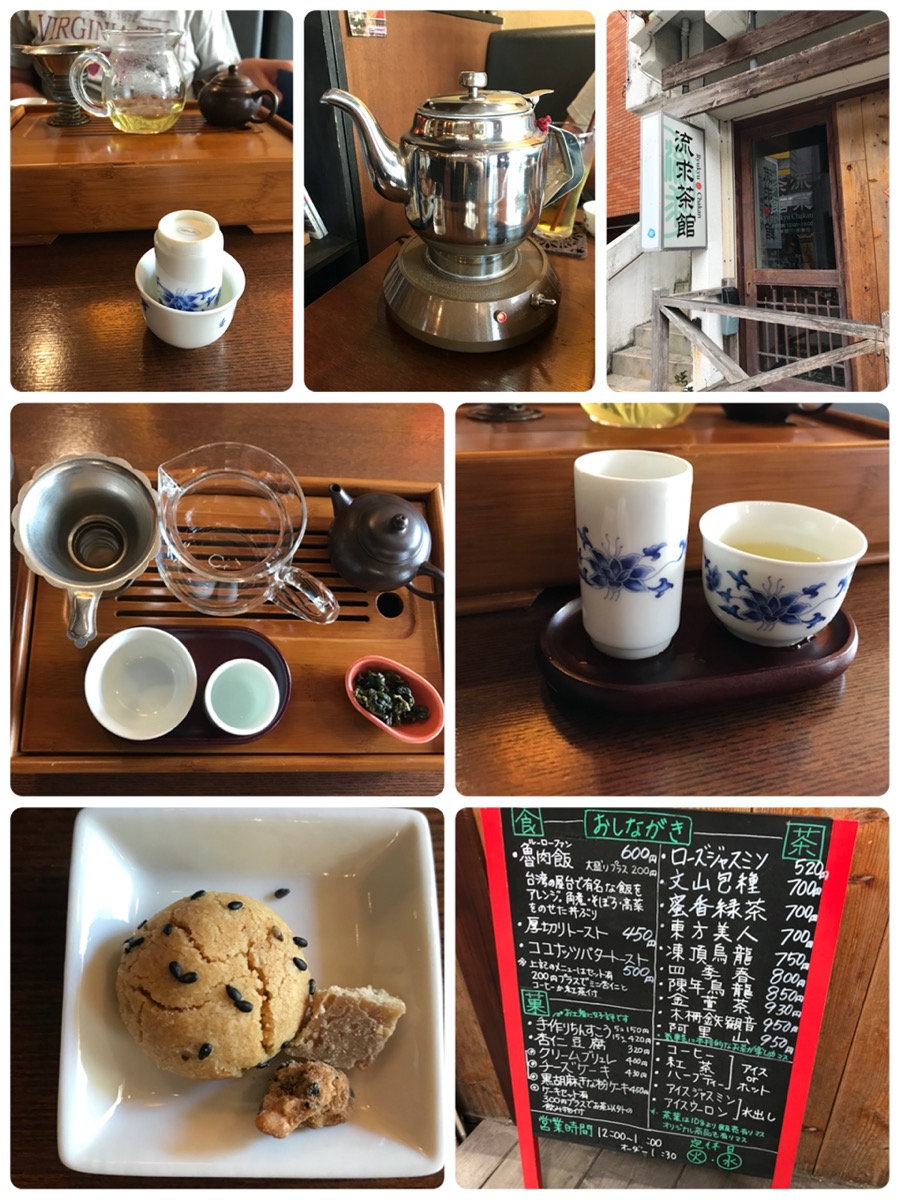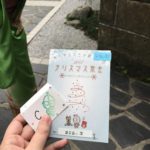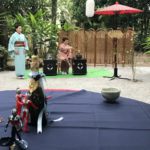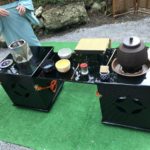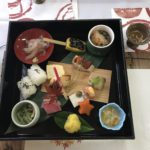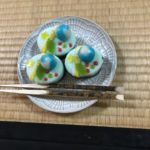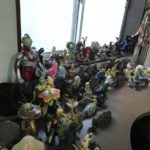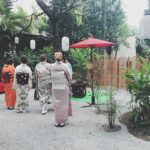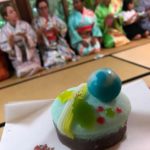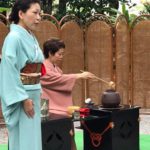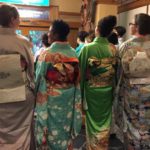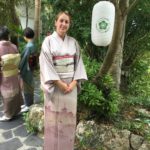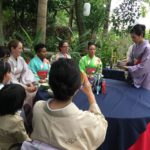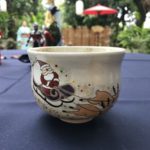金沢 Kanazawa is located in Ishikawa prefecture 石川県.
百万石祭 Hyakumangoku Matsuri: The Hyakumangoku Festival is held in commemoration of Lord Maeda Toshiie’s entry into Kanazawa castle on 14th June, 1583 (Tensho 11) which laid the foundations of the present day Kanazawa.
Summer is approaching, and we decided to take a trip up to Kanazawa for the matsuri since my mother-in-law came to Okinawa to visit us.
We flew into Komatsu Airport on Friday and from there took the bus (~45 min) to Kanazawa Station. Since there were 3 of us, we booked an AirBnb near the castle park.
Once we were settled in, we decided to check out the town. We walked towards the castle area and Kenrokuen 兼六園 (one of Japan’s top 3 beautiful gardens) where there were many museums. We looked through some ceramics shops and also ended up at the 21st Century Modern Art museum. It was fairly interesting, though no pictures inside except in the “pool” area. Overall, it was quite a nice area. Kanazawa has many beautiful traditional Japanese crafts, such as ceramics, lacquerware, cloths, as well as items adorned in gold leaf. We enjoyed seeing all of these in shops and museums.
Since the festival was starting up, there were food stalls everywhere, all with mostly typical matsuri food (yakisoba, grilled squid, takoyaki, bananas on sticks, yakitori, etc).
On Friday evening, there was the Kaga Yuzen Toro-Nagashi 加賀友禅燈ろう流し (Lantern floating ceremony). It was definitely packed with people, and I am not sure we were in the best spot by the Ashinogawa bridge, but we still got to see plenty. Since it was dark at this point it was actually very chilly considering it was the first week in June, and I did not pack appropriately. I don’t know if this was unseasonably chilly, but I would recommend pants/long sleeves/jacket/light sweater type of clothes if you go. While the lanterns were floating down the river, children’s parades were going on throughout the town. It was quite cute with them dressed up, carrying lanterns, and playing drums.
The next morning (Saturday), we wandered about the old samurai districts and went through the Nomura Family Samurai House. I stopped at every opportunity I could to look at and taste Japanese sweets (unfortunately husband and MIL are a lot less interested in these as I am).
We wound our way down to Kenrokuen (garden) which was free that day. We spent some time enjoying the beautiful grounds and buildings within the park itself. Next, we went to a tea ceremony held inside the park. I was a bit expensive (1500yen), but interesting (and delicious) for me (again, less so for husband and MIL). So perhaps I would not recommend it unless you are interested in these things.
After the park, we went over to the castle and walked all the way through. Various performances were being held in the open field for the matsuri… some traditional, some less so. There was traditional shishimai 獅子舞 (lion dance), which was different than Okinawan-style– it was so interesting! The castle was nice, though maybe not as nice as some of the other castles in Japan.
Higashi chaya-gai ひがし茶屋街, the old entertainment (geisha) district, was my next stop. I stopped at several traditional Japanese confectionaries (wagashi-ya 和菓子屋), for samples and shopping. They were are marvelous and varied. Many sweets included gold-leaf topping which Kanazawa is known for– over 98% of Japan’s gold leaf is produced here. I saw many people consuming gold leaf ice cream. Some shop keepers may speak English, but it is much easier to communicate in Japanese. There was a shop with local nihonshu 日本酒 where you could order a glass (average price 500yen) and drink; this place was filled more with young’uns who were mostly interested in getting a little tipsy, and there was not a lot of room (some people even just ordered regular beer). I simply ordered the recommended-of-the-day 本日のおすすめ, which ended up to be so-so. Next time I might skip this place unless it was less crowded. I could have stayed in this area for hours admiring all the sweet goodies, but my fellow travelers were not as enthusiastic about this. While this place was a bit touristy in some regards, it was interesting and fun for wagashi-lover like myself. During certain times of year, I hear it is possible to go to geisha shows/dinner.
In the afternoon was the main parade. We were recommended to watch closer to the park grounds than the main station where it started. It seemed to work out nicely. The first part of the parade was mostly just some local groups, but towards the middle and end was the traditional dancing, costumes, music, princesses, etc. So next time I would probably skip the first hour and just watch the last half to be honest!
We had reservations for dinner to Kotobukiya for shojin ryori 精進料理 (Buddhist vegetarian cuisine) at a ryotei 料亭 (a type of traditional Japanese restaurant). It was really quite nice, though also quite expensive. Course after course came in, and my husband and I drank nihonshu 日本酒 with it. Afterwards we were quite exhausted and all went back to the Airbnb to crash. I would have liked to go watch some of the Noh theater, but it was chilly and everyone, including myself, was tired from a long day. Maybe next time.
Sunday morning, we walked through Nishi chaya-gai にし茶屋街 old entertainment district, looping through the Temple district. The Nishi chaya-gai was much smaller than its counterpart, yet still very beautiful. Since we went early in the morning, nothing was open yet, though the children’s matsuri was getting ready for their activities in the Temple district (where we actually headed next). There are so many old temples clustered together, including the “ninja temple” (which I did not get reservations for). It makes for an interesting walk. The ninja temple requires reservations, and the tour is in Japanese. However, you can walk about the outside part, even if you cannot go in and see all the ninja traps.
Finally, after omiyage and eki-bento shopping at Kanazawa Station, we boarded the train to Tokyo for a 2.5 hour journey. Of course, I purchased some local Kanazawa beers for the train ride…
Overall, we had a wonderful and interesting time in Kanazawa known as “little Kyoto”!
Images: https://imgur.com/a/mYY0t
